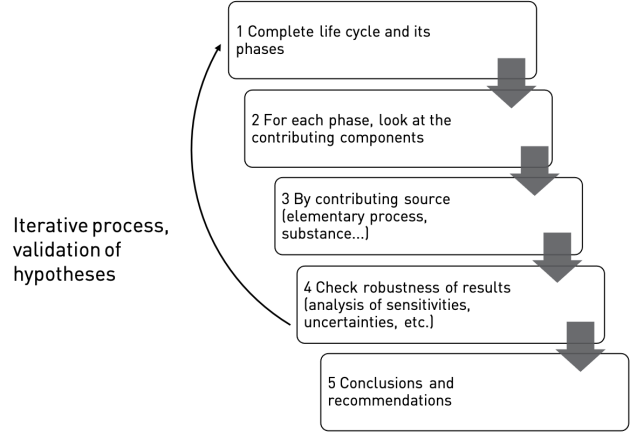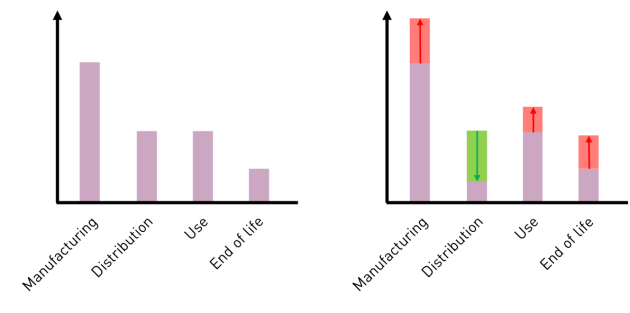Interpretation
Interpretation is a cross-cutting phase that must be carried out throughout the LCA, from the definition of the scope of the study and its objectives to the assessment of impacts.
It enables us to objectify our studies by comparing the assumptions made throughout the LCA, or the data manipulated, with the results obtained from the study.
What is interpretation ?
Définition :
ISO 14044 defines the interpretation phase as
“the phase of the life cycle assessment during which the results of the inventory assessment and/or impact assessment are evaluated in relation to the objectives and scope defined for the study in order to draw conclusions and recommendations”.
In particular, the interpretation stage enables the objectives set in the first stage to be met.
But it will also be possible to verify the assumptions made and identify, if necessary, the need for additional data collection.
Carry out an interpretation process
Principle
The principle is to study results progressively, initially for the entire life cycle and then for each life phase. In the case of the most significant contributors, investigations can be taken as far as the sources of the contributions.
The aim here is to determine any impact transfers and check the robustness of the results by analyzing uncertainties and sensitivities.
The process is iterative and must be carried out until a sufficient level of quality is achieved: it is up to the LCA specialist to judge the relevance of this level of quality in relation to the objectives of the study.
Exemple :
If the data used to model a component (mass, transport distance, energy mix, etc.) are highly uncertain, and their impact is decisive in the overall results, further studies are required to improve them.
Fondamental : Sensibility analysis
Sensitivity analyses are used to assess the reliability of results and conclusions with regard to the assumptions and choices made throughout the LCA.
They consist in varying a datum and studying how this affects the final results.
Fondamental : Impact transfers
When comparing two products, systems or services, or between two study versions, the LCA specialist must ensure that the benefits achieved on the one hand have not been achieved at the expense of other elements.
Impact transfer can be between environmental indicators or life phases.
Exemple : From one impact category to another
Exemple : From one life cycle stage to another
The uncertainties
There are different types of uncertainty in :
data
evaluation methods
models
Some data
When it comes to data, there are several possible causes of uncertainty.
For example, they may not be representative of the situation under study (e.g. choice of a European energy mix when the product is used in France), or the uncertainty may relate directly to the data itself (e.g. the value of a mass will always depend on the precision and accuracy of the measuring tool used).
Evaluation methods
The uncertainties associated with assessment methods relate to two main elements. Firstly, there is the choice of impact categories, within the method or selected by the LCA specialist. Secondly, for a given category, the definition of characterization factors may be subject to uncertainties.
For example, the IMPACT 2002+ user guide specifies that a difference of less than 10% cannot be considered significant for the climate change indicator. This value rises to 30% for the acidification and eutrophication indicators.
Some models
Uncertainties are also to be found at the level of the LCA model, particularly with regard to the various assumptions made about the life cycle, allocations, processes chosen, and so on.
Critical review
Texte légal :
The standard governing the conduct of LCAs allows for variations depending on who is in charge. This may involve the modelling of the life cycle, the indicators taken into account, etc.
This is why the standard requires a critical review to be carried out before the results of an LCA can be published. This consists of asking a panel of external experts, with no conflicts of interest, to analyse and then write an opinion on the study. It is the expert's responsibility to justify certain assumptions or to indicate any shortcomings or points to watch in relation to the study.
The LCA will be published with the opinion of this (these) expert(s).


